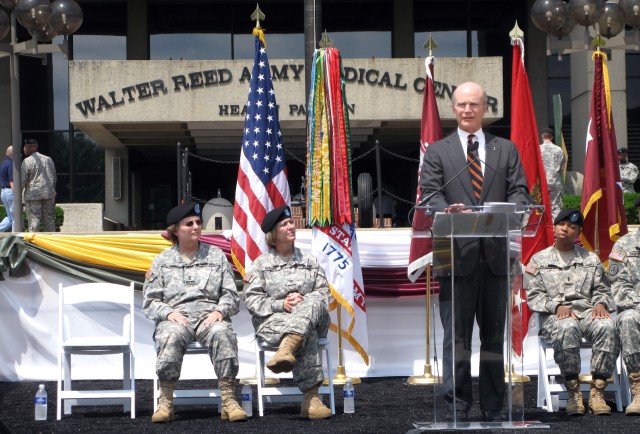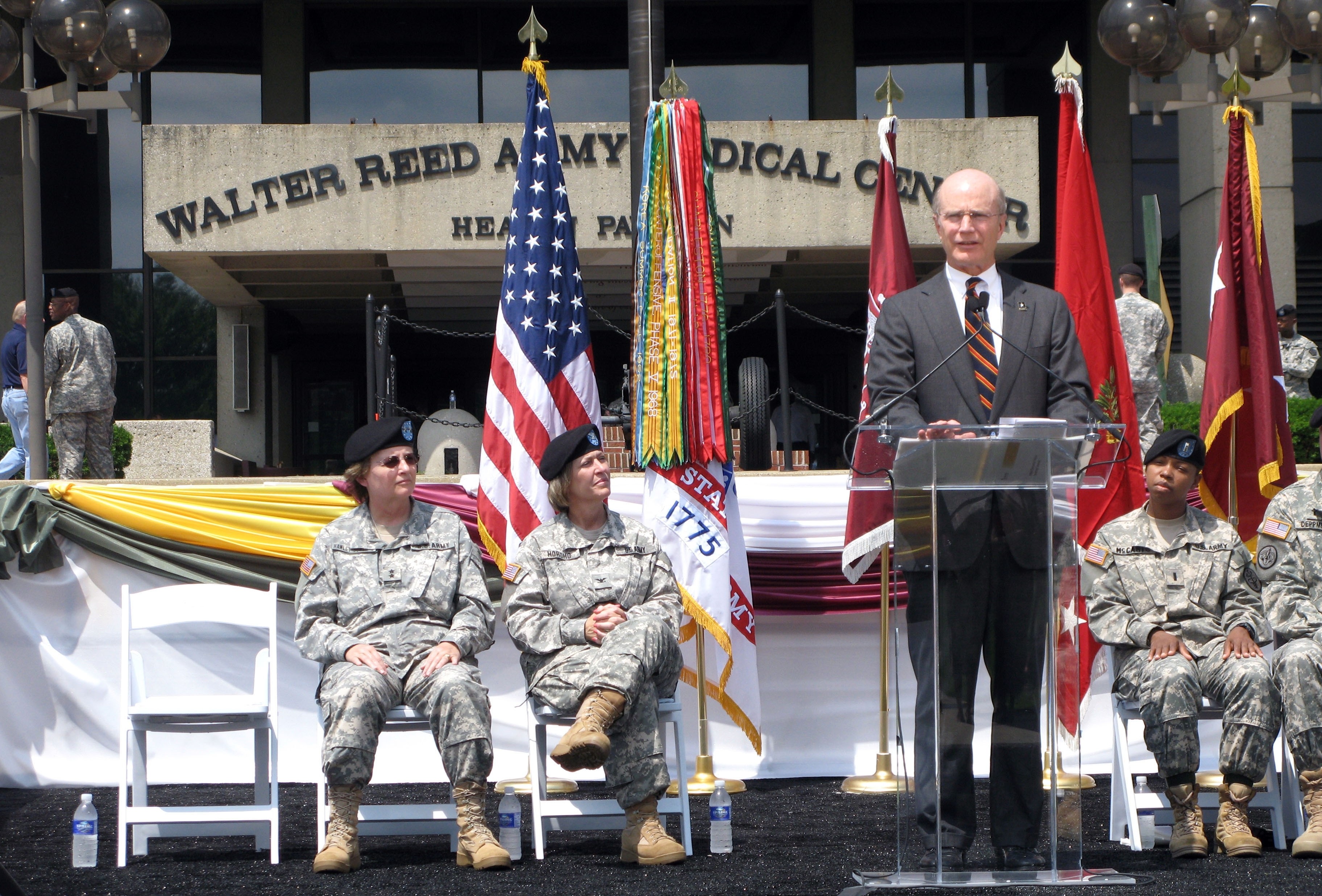
For Wounded Warriors returning from Operations Iraqi Freedom and Enduring Freedom, the 30-to-40-minute drive from the runways of Andrews Air Force Base, Md., to Walter Reed will be improved with the first of three new Patient Evacuation Vehicles (PEV). The vehicle was unveiled at Walter Reed Army Medical Center, June 5.
Maj. Gen. Carla G. Hawley-Bowland, commander North Atlantic Regional Medical Command and Walter Reed Army Medical Center, said the new PEVs will afford patients a more comfortable ride than the Blue Bird buses currently in use.
Secretary of the Army Pete Geren called the PEV "an innovation that will improve patient care and also provide greater service in the National Capital Region in emergencies."
The size of the PEVs allows staffing by Critical Care Air Transport teams capable of transforming the PEV into a mobile intensive care unit. "The team is experienced in the care of critically ill or wounded patients with multiple-system trauma, shock, burns, respiratory failure, multiple organ failure or other life-threatening complications," Hawley-Bowland said. "This capability can save countless lives during the ride from Andrews to WRAMC."
The $510,500 vehicle can transport 16 non-ambulatory or 12 ambulatory patients, plus the Critical Care Air Transport teams. Maj. Terri Holloway-Petty, officer-in-charge of Air Evacuation (AIRVAC) nursing section, said the PEVs give the AIRVAC team more room to work and technology built in gives other advantages. "We have a lot of things already built into the walls which we didn't have with our other vehicles," Holloway-Petty said. "We have our oxygen and suction, lighting, electricity - all things we can use with equipment the Soldiers bring back with them. They have a long flight (from Ramstein Air Force Base, Germany) and sometimes we may need to plug things in and do other things with them, so having the extra capabilities helps out a lot."
The new vehicles are 40-feet long and eight-and-a-half-feet wide. They are wider than the converted Blue Bird buses currently in use, but, according to Holloway-Petty, working space for the AIRVAC team may still be a challenged. She said the AIRVAC teams will remove the stanchions on one side of the vehicle and use the other side for litters, creating more movement space for the team. "We'll take down a side and that way allows the litter teams to get in and out without snagging their uniforms on the stanchions."
Teams are currently training on the new vehicle, learning to use its access ramp and many advanced features. The PEV features advanced hydraulics. "It shields us from a lot of the road vibration as we transport to and from Andrews Air Force Base," Holloway-Petty said. "With its shock absorbers, it should be easier, more comfortable, for the patients."

Social Sharing